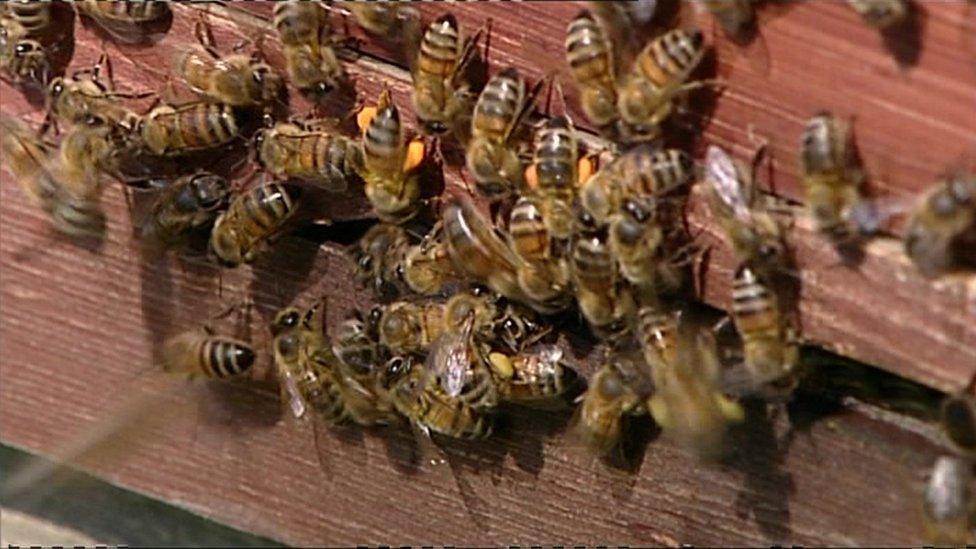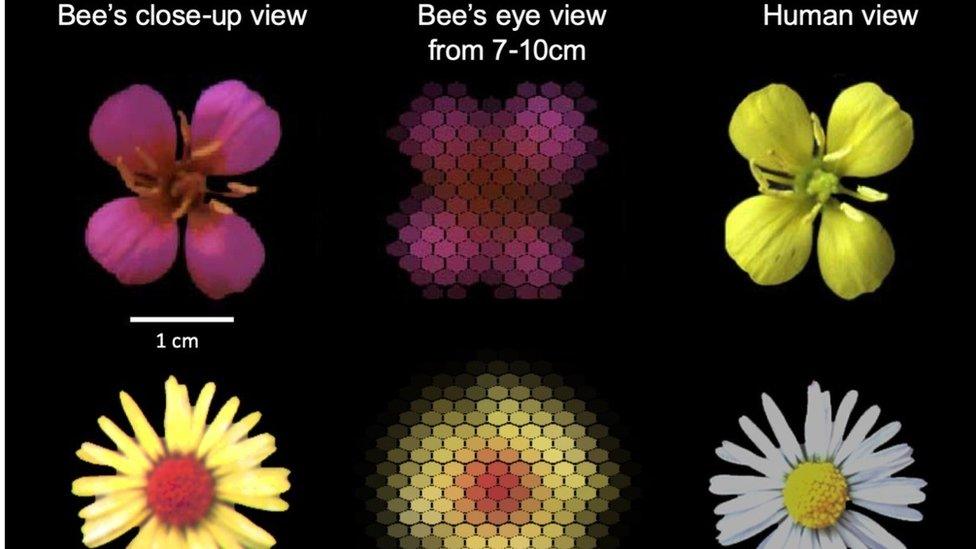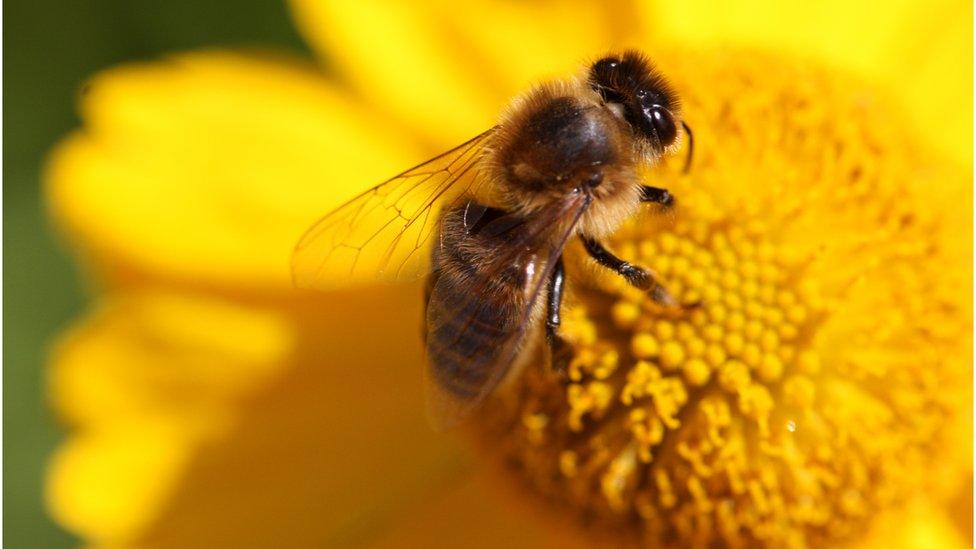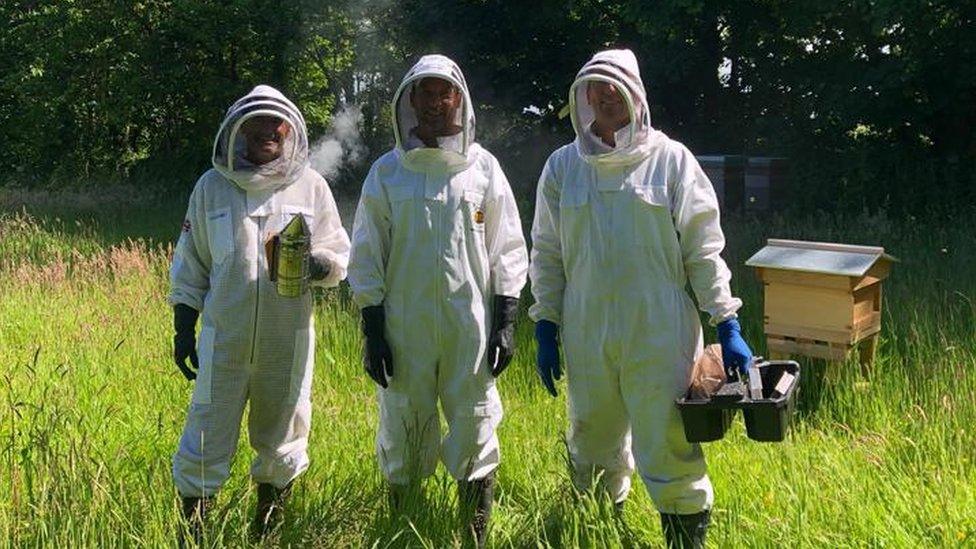Honey bees rely on flower patterns, University of Exeter study finds
- Published

The study found bees rely on flower patterns as well as colour
Honey bees rely heavily on flower patterns when searching for food, a new study has found.
The research has revealed honeybees can distinguish between different flowers by using colours and patterns.
A team led by the University of Exeter tested bee behaviour and built bee's-eye-view simulation as part of the study.
Researchers said the findings are important to understand how it affects the evolution of flowers.
The study found in a series of tests, bees rarely ignored patterns, which showed colour alone did not have an impact.
This may help to explain why some colours that are visible to bees are rarely produced by flowers in nature.

The study found how insects see colour and learn patterns
Professor Natalie Hempel de Ibarra, from Exeter's Centre for Research in Animal Behaviour, said: "Showing how insects see colour and learn colour patterns is important to understand how pollinators may, or may not, create evolutionary 'pressures' on the colours and patterns that flowers have evolved.
"Our findings suggest that flowers don't need to evolve too many different petal colours, because they can use patterns to diversify their displays so bees can tell them apart from other flowers."
The research, by a team including the Free University of Berlin and the University of Auckland, was funded by the Biotechnology and Biological Sciences Research Council (BBSRC).

Follow BBC News South West on Twitter, external, Facebook, external and Instagram, external. Send your story ideas to spotlight@bbc.co.uk, external.
Related topics
- Published21 August 2022

- Published16 June 2022
